By Georgina Kidd, Bachelor of Education
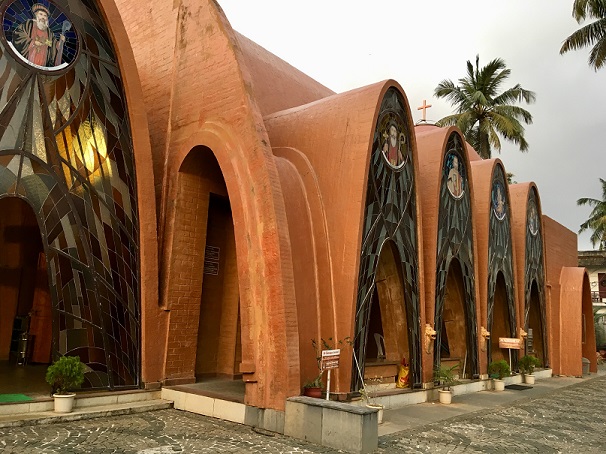
A Syrian Orthodox church in Kochi, Kerala
One thing that permeates Indian culture is spirituality. As I took the photo above, the prayers from this Syrian Orthodox church spilled out into the street and mixed with the Muslim calls to prayer and nearby Catholic masses. The multi-faith prayers echoed in bustling streets full of kids (human and goat) playing in the Sunday sunset.
While such a peaceful scene suggests the benign co-existence of diverse religious communities, religion also plays a political role in this nation of contradictions. At present, the political trend towards more oppressive and extreme Hinduism has seen division and violence in the country. This has a particularly negative impact on Muslim and Christian communities.
The southern state of Kerala has a mysterious religious history, one which has contributed to its unconventional story of development. European Catholicism first had contact with Kerala in 1498 when Portuguese sailor Vasco da Gama landed in Kochi with two Catholic priests on-board. But Keralan Christianity predates such contact and communities were found to be already worshipping Jesus, in the Syrian Orthodox Christian tradition. The Keralan church believes that Jesus’ disciple, Saint Thomas, founded 7 churches in the state in AD 52. This state, which calls itself ‘God’s own country,’ therefore has a far-reaching Christian history, which has influenced its present unique state of development. 19th Century Protestant missionaries brought education to people of all castes, both male and female, a move which was revolutionary in the highly stratified society of India. This has contributed to Kerala’s comparatively high literacy and gender equality status, with the highest Human Development Index and life expectancy of any Indian state.
The state’s religious culture is surely connected to its geography. Located on the west coast of the Indian subcontinent, Arabian spice traders have forged a centuries-long connection with the Middle East – the region of the birthplace of Christianity and Islam. The often-volatile coastal environment and richly biodiverse mountain rainforests take the brunt of the annual monsoon. Communities of deeply spiritual people whose livelihoods depend on the whims of the climate have turned to the gods – both Hindu gods or goddesses, the God of Abraham in the case of Judaism, Christianity or Islam, or the modern ‘god’ of sustainable development. For generations, people have devoted their lives unquestioningly to such higher powers with a loyalty that is to be admired.
Last year, devastating floods destroyed the homes and livelihoods of the vulnerable fishing communities lining the coast of Kerala, leaving thousands stranded on the second floor of buildings, unable to be retrieved by the few helicopters flown in to assist the rescue effort. Local fishermen mobilised using their fishing boats to rescue thousands of stranded people, plucking them from the floodwaters and bringing them to safety. Hearing these stories, I was reminded of a story from the life of Jesus. Jesus calls two disciples to leave their livelihoods of fishing and follow him. In doing so, they would become “fishers of men.”
For people living in relative comfort such as ourselves, it can be hard to conceive of the kind of faith that would shape lives and communities in such a way as it does in Kerala. In comfortable Australia, faith is often an ‘optional extra’. Perhaps we have something to learn from people with a greater understanding of how little control humans have over their environment and lives.
Category: Basic info
Inequalities in India: An analysis for those who read the paper from back to front
By Rory Green
Bachelor of Engineering
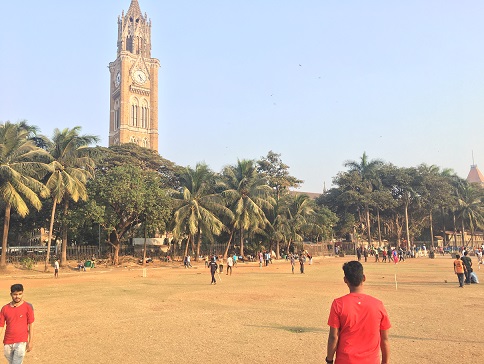
The purity of the sight of bat on ball contrasts with the rundown surrounds. Cricket is commonly played on the dusty fields of urban shanty towns and poor rural villages, but not as often as I’d imagined. Cricket is largely a rich man’s game in India. This reflects broader social inequalities. The majority are denied the opportunities, education and social connections enjoyed by those who worship at temple of cricket that is Maidan Oval in the heart of Mumbai. At the national level only four members of the Indian cricket team have come from the lowest caste, the Dalits, in the team’s 87-year history.
Patterns of power and privilege are evident in the glitz, glamour and opportunities of the wealthy in Mumbai. Much of this is reminiscent of the technicolour antics of the Indian Premier League (IPL). Like the T20 format, the city has burst onto the global stage in the last 20 years, exploding as market liberalisation allows the movement of businesses and talent into the city. This accentuates the power of the elite ruling class, whether it be Mukesh Ambani, Shar Rukh Kahn or Virat Kohli. But just as the IPL is replete with tales of corruption and match fixing, there are weaknesses in the cityscape of Mumbai.
Half the city’s population is confined to informal settlements. Reservations, like South African cricket’s quota system are not able to fully overcome the inequalities. The contrast between the elite and the majority are on display in M Ward East, home to the largest rubbish tip in Asia – at least until the English team visit India on tour.
In Kerala, far away from the technicolour antics of Mumbai, my legendary fellow field-trip members allowed me to watch the England Lions play India A, at a nearby field. This proper game of long form cricket reflects Kerala’s efforts to implement proper, long term development strategies. Delivering strong technical skills, fostering community participation and offering opportunities for employment are the key tenets of building both a successful cricket team and an Indian state. These policies are reflected in the Kerala state government’s additions to the National rural Employment Guarantee Scheme which offers extra days of work to the unemployed for recovery work after flooding. Impressive community led education and environmental programs create a nurturing environment, acting as high-performance academies for the next generation. These programs are just some examples of those that make Kerala, at least in our limited experience, appear more socially equitable compared to Mumbai.
Development and equality in India, varies as widely as cricket pitches across the globe. Unfortunately, in a lesson learnt from cricket, galvanising and growing India will require strong, fair guidance, but Indian politics is lacking the galvanising leadership of MS Dhoni or Virat Kohli, who have been able to pull the whole nation together.
Is Kerala the way forwards?
By Fayanne Cui
Bachelor of Science (Environmental Studies)/Bachelor of Law
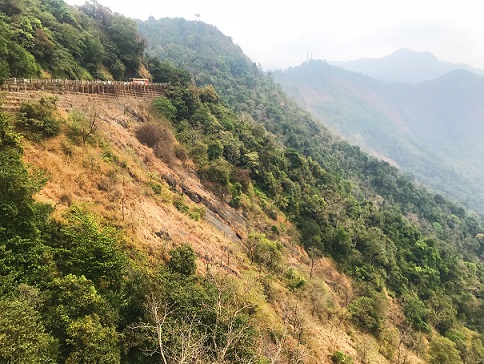
India is a nation fraught with contradictions. Despite their democratic system, there is a high level of political violence. The world’s most expensive residential property co-exists next to slum communities. The informal sector makes up 90 percent of the workforce, yet they have no job security nor legal protection.
These contradictions are what I carry in mind as we arrive in Kerala. Kerala sits along the southern coast of India, a state renowned for its breathtaking canals and flourishing biodiversity. On the four-hour drive to our accommodation, I am struck by not only this beautiful, mountainous landscape, but surprising prosperity and development. There appears a certain permanence to Kerala’s buildings, roads are well designed and impressively scale up the mountains. Yet its very geography poses a challenge to the people living here, shaping a lifestyle that is paradoxically dependent and threatened by the monsoon each year.
When monsoon rain is good, that is, when it arrives at the right time and is well distributed, the benefits reaped by the people are vast. Farm income increases from successful crop production, which in turn boosts the local economy by driving up sales of consumer goods and farm supplies. Dams, which provide water for hydropower generation, drinking and irrigation, fill up. The monsoon forms the crux of their livelihoods. Yet the 2018 Kerala floods reveal just how devastating excessive monsoonal rain can be. Deaths from falling debris was compounded by landslides that occurred due to deforestation. Large parts of Kerala were inundated because natural boundaries have disappeared with mining and development projects. Moreover, the intensity of monsoonal rain will only increase with climate change, causing areas like Kerala to become more susceptible to flash flooding.
How then does a state mitigate the impacts of such severe climatic disasters? In the week that I’ve been in India, it is clear to me that the solutions are neither obvious nor one dimensional. The survival of rural communities depends so much on the intricacies of their relationship with the environment around them, a relationship that is underpinned by a history of land degradation and the disproportionate impacts of climate change that they are vulnerable to. It seems to me almost impossible to overcome. However, a pilot study conducted in Meenangadi Grama Panchayath, a village level local administration, has opened my mind to potential change. Adopting a carbon neutral sustainability scheme, they have not only taken measures to reduce their environmental footprint in all sectors but have succeeded where some of the wealthiest nations have failed – addressing climate change as a systemic issue. Investment of 100 million rupees, funded by the state government, towards reforestation gives me hope that there will be a prosperous and progressive Kerala.
My time in India has indicated that no solution will ever be simple or straightforward. But if Kerala is capable of instigating such substantial change, then perhaps there is something to be said about India moving forwards in the right direction.
Dating in India: Social complexities of an emerging generation
By Stephen Sanders
Bachelor of Science, majoring in Environmental Studies and Geography
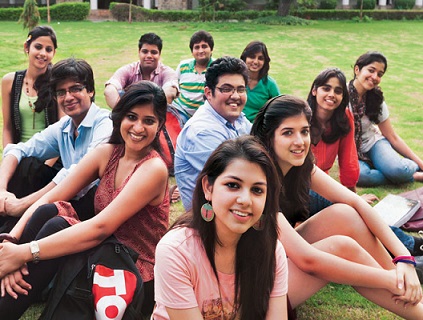
This has not just been a week of observation, but rather a week of personal reflection.
It’s been over a week since I first arrived in Mumbai, India, and I’ve seen numerous sights that have challenged everything I first thought about both India and the people.
We have learnt about caste and class systems, about religion and gender segregation and about the evolution of Indian society. Each dynamic has its own set of stories and implictions. However I have been particularly surprised by the place of women in Indian society, expressions of gender and sexuality, and dating as opposed to more traditional ‘arranged marriages’
It is no secret that women in India are marginalized, often horribly so, by a society that has withheld their rights for centuries. Unfortunately, this narrative seems to transcend national boundaries and is found worldwide. But it is changing.
I think a lot of the mistreatment is being challenged by the current generation of young women and young men. But there is still have a long way to go.
Globalisation and readily-available access to internet services is breaking down barriers between the traditional views of Indian society and the more liberal views of the rest of the world. My generation is at the forefront of this shift.
Social media, and in particular, uncontrolled dating sites like Tinder, blur the boundaries between caste and gender segregation and allow more liberal young people to more easily meet each other.
And… they allow foreigners to meet local people. I admit it. I used Tinder while travelling, before the field school began, and I instantly noticed some odd things about it. But it was only after talking to numerous people – from lecturers and professors to Indian friends and local people my age, that I began to realise some of the complexities surrounding dating in India.
Academics spoke about the history of gender divides in India, while local friends would elaborate on how they are perceived now. This has allowed me to develop a picture of India from a unique perspective.
India today is, in many ways, a subtle struggle between the old and the new. People in their twenties are emboldened by external influences and often push back against the traditional, conservative nature of their parents’ generation.
Young women I have met or spoken with often complained about the restrictions they feel when it comes to developing relationships with men. These restrictions seem entrenched in parenting and society. The young women I met often alluded to their own rebellion against these power structures, for good or bad. It is only a matter of time before this new attitude percolates into the greater mass of Indian society.
And to me, that defines a lot of the way Indian society currently exists; it is trying to find an identity within an entirely dynamic world, and that can be difficult. But at the individual scale, I am heartened by the youth of my generation who have the courage to step outside traditional social norms and challenge the system that seems to hold them down.
From a society that’s struggling to move beyond the caste system, gender inequality and religious division, India, and especially young Indian women, I think can look forward to a more equal future.
Traffic, Congestion and Air Pollution. How bad can it really be?
By Dominic Nevin
Bachelor of Science/Bachelor of Arts.

Having been in Mumbai over a week now I remain deeply concerned about where this megacity will draw the line when it comes to traffic congestion and air pollution. In the middle of Colaba, walking through a traffic jam, I came across the sign (pictured above) and found myself wondering if there were any serious measures that were being taken to keep Mumbai’s air clean. To me, the cleanest thing in that street, placed ironically in the middle of a busy city intersection, was the sign itself!
With over 20 million inhabitants, Mumbai has a population density of 31,700 people per square kilometre and as of now, the average air quality index for Mumbai sits at 154 which is just over the 150 threshold which deems it, quite simply, unhealthy for everyone. However, the most alarming thing to me is that with 52% living in large conglomerations of informal settlements, and cars belonging predominantly to the middle class, this pollution is being created by only a subsection of society.
Now let’s consider the possibility that India solves several impending crises through providing enough jobs to accommodate the highest youth population in the world; grant land tenure to all informal settlements; successfully implement their inclusive growth scheme to improve income; cure chronic poverty; and, facilitate equal rights for women in access to jobs and opportunities outside the home. One must at some stage, confront the question of how this development will affect traffic congestion and air pollution? Current estimates put deaths per year as a result of air pollution in India at over 1.6 million. How will Mumbai cope if social equality, and particularly car ownership, is suddenly secured for the majority of the city’s inhabitants?
Improving the current issues that Mumbai faces, without further impacting dangerously poor levels of air quality and traffic congestion is the challenge. Solutions might include: encouraging a mass return to more archaic forms of transport such as walking and cycling, and expanding the public transport infrastructure. From my experience in Mumbai, it seems critical that there needs to be a shift away from a culture of private care use. I say this as the congestion that I have so far seen moves little faster than walking pace, if it moves at all. Meanwhile tonnes of nitrogen dioxide are ejected into the atmosphere and ultimately our lungs. I can only hope that measures are being taken by the local government, following the examples of Milan, Dublin, Stockholm, Belgian, and Copenhagen, to create cleaner, more enjoyable and more people friendly cities for all.
Where are all the women?
By Annie Nolan
Bachelor of Arts, majoring in geography and government & international relations
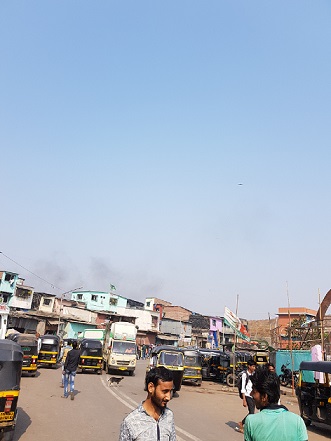
The edge of the Deonar dumping ground, Asia’s largest rubbish tip, is lined with informal settlements, fruit vendors and rickshaws. Standing on this street, as on many others in Mumbai, I am struck by the lack of women. As we have explored Mumbai in our free time, I have repeatedly marvelled at how few women there are in some public spaces. But our time in class has helped offer an explanation.
In sessions with TISS academics and class discussions we have been learning about the social structures which inform the Indian context and shape the nation’s pathway towards development. For example, the caste system which has shocked, infuriated and fascinated us all. We have also discussed the role of gender at length – including social attitudes towards women and the profound effect these have on development.
Gender inequality in India is pervasive and it affects women in various ways throughout their lives. Discrimination begins in gestation, as natality inequality is a growing problem with a female to male ratio at birth of 900 females per 1000 males in 2015. This is the result of sex specific abortions and parental preference for boys. Gender inequality also impacts on women’s access to education which is reflected in the nations literacy rates as 64% of females are literate compared to 80% of men. In addition, gendered discrimination increases vulnerability to violence in both the public and private sphere. Such inequality has a far-reaching negative effect on society as a whole.
My initial observation that there are few women in some public spaces now seems an obvious product of social attitudes towards women and the subsequent restrictions placed on women’s mobility. Yet, despite the many challenges Indian women face I have also seen reason to be hopeful for the future. Personally, I have noticed that by contrast to certain public spaces young women move freely on TISS campus and occupy half the student population. Whilst visiting the Mumbai headquarters of the voluntary development organisation Youth for Utility and Voluntary Action (YUVA) I was encouraged by their programs to support and empower women and children. Through the media I have watched on as in the state of Kerala two women; Bindu Ammini, and Kanakadurga, entered the Sabarimala temple which women have historically been banned from entering. In doing so they defied entrenched social values and sparked the formation of a 620km human chain in support of gender equality.
Despite my optimistic outlook, it is impossible to know whether India will rise to meet the significant challenge it faces in achieving gender equality. What is clear, is that it is extremely important for the whole of society that gender equality improves.
Today’s Four-Caste: Untangling the social climate of India
By Kieran Bonin
Bachelor of Secondary Education/ Bachelor of Arts (History and Geography)
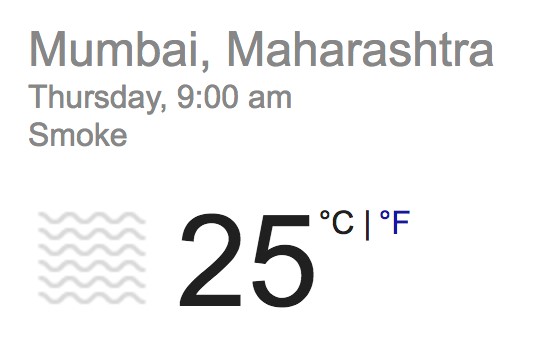
When googling the weather for Mumbai to select clothes for this trip, to my confusion it read ‘smoke’ – something I had never seen before. Although India is filled with many surprises, the biggest to me was the caste system that is entrenched into its culture.
If you are like me and have no idea of the caste system that is practiced in India, I will give you a very brief crash course. The traditional theory is that the Hindu God Brahma created four castes of people from his body; the Brahmins come from the head, Kshatriyas the arms, Vaishyas the legs and Shurdras the feet. The Dalits were an added fifth group which are outcasts in society. Each caste has a different attribute and are suited to particular jobs, for example the higher caste Brahmins come from the head and therefore are teachers or priests. The Dalits who come from the feet do the unwanted jobs such as street sweeping. Individuals keep to their own caste group. You are stuck with your caste and marrying outside of it may result in death.
While sitting in my fourth lecture in Mumbai I had a lightbulb moment that I am almost embarrassed to admit as a geographer. When looking at issues in India I had fallen into the trap of placing Indian culture into the same frameworks I use to understand Australian issues. I could not have been more wrong. You cannot understand how a country works without understanding its culture and social dynamics. This is the problem of studying other regions and cultures inside a classroom in Camperdown. How can one understand gender discrimination or widening wealth gaps in India when not understanding the dynamics of Indian culture? After a few days I discovered that most issues in India can be connected to the caste system. Being able to be in the country and experience its culture first hand has made it easier to see the complex social system that Indian policy is challenged with. This is something I would not have picked up as quickly if I were doing the same course in Australia.
In 2003 a report named Vision Mumbai suggested that one step to move Mumbai into a world class city would be to stop new slums forming. However, when planning cities and creating polices it is important to first understand the social dynamics and processes like the caste system to avoid oversimplification. This idea is relevant to an Australia context in that urban, rural and remote areas are all different and policy needs to be dynamic to cater for their dynamic nature.
As the smoke settles and my grasp of the caste system improves, my understanding of the complexities of India will as well.
A Tale of Two Cities
By Patrick Loughrey
Bachelor of Arts (Political Economy/Government & International Relations)
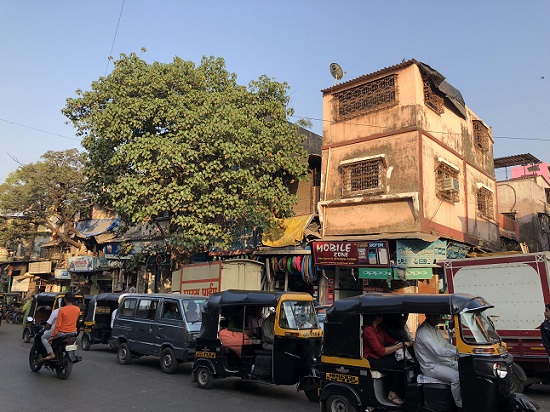
Mumbai is a city riddled with contradictions. On first arrival the modern airport terminal, complete with western food chains and modern amenities, juxtaposes uneasily with the informal settlements we pass on our way to the Tata Institute for Social Sciences. It seems a sharp contrast to have such deprivation co-exist alongside such wealth. Indeed, it appears as though two cities exist alongside each other in an uneasy relationship. The modern Mumbai, populated by vast wealth, European cars and American chain stores sits uneasily alongside the majority. This Mumbai, the Mumbai of the majority, is filled with street vendors & informal workers. The political economist within me wonders what causes such drastic inequality, and how can it be overcome?
In our first few days lessons with local academics have framed our discussions with the caveat that ‘nothing in India is simple’. The scale, complexity, and diversity of India means there can be no easy answers. Such complexity defies simplification. During our introduction to the caste system it seems as though the realities of social relations, much like any western economy, can explain the vast inequality I have seen. But social relations within India are not merely economic, as in the west, but intersect across social and religious hierarchies. The Caste system can be best described as having your position within the social hierarchy determined from birth. You enter a complex set of social relations that in turn largely determine the trajectory of your life: including employment, marriage and education. From my own western liberal zeitgeist such ideas seem alien, an anathema to my own concept of equality. This inequality manifests itself within the urban space of Mumbai which is itself not neutral, instead it actively produces and reproduces the social relations rooted within caste and embeds the pre-existing inequality through a feedback loop. Inhabiting these spaces is an eye-opening experience, walking through an informal area such as Shivaji Nagar and Chembur, the scale and pattern of inequality is clear.
The Constitution of India asserts in its preamble that equality of status and opportunity is guaranteed, however, the realities of caste and inequality seems to fly in the face of such assertions. Though the law seems to reflect egalitarian concerns it is within the social sphere where cultural norms are actively reproduced. The begs the question, how can Mumbai manage its development, addressing its inequality and ensure inclusivity? To what extent will this challenge be hindered by social norms such as Caste. How can the aspirations of modern India, an emerging global power, be reconciled with its own values. Perhaps it can only be done by ‘always looking to the future’ as a local shopkeeper put it to me. He managed to succinctly capture the essence of this clash, that only time will beget outcomes. Perhaps then it is too early for me to make firm conclusions on the true nature of inequality, after all to reduce Mumbai’s inequality into the neat reduction of caste, defies the complexity and specificity that any nuanced discussion demands. What remains certain is that Mumbai is a city in flux, the old and the new vie for space. Managing the challenge of inclusive development will be immense and the correct path may not yet be determined. Only time will tell, but with the right outlook anything is possible.
Is Mumbai going to drown?
By Matt Bailey
Bachelor of Science and Bachelor of Commerce
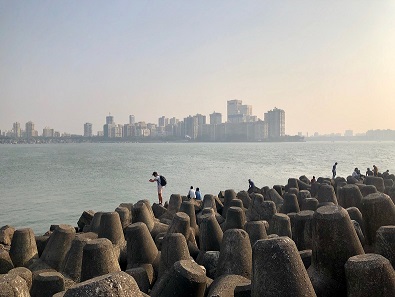
Among the chaos of Mumbai, spatial constraints have led to wildly creative ways of people using space. To me, nothing seems fixed, the wonderfully disorderly city feels like an evolving entity. The dynamic megacity regularly endures monsoonal flooding. Vast informal squatter settlements are swamped, yet defiantly recover time and time again. However, with climate change and mean sea level rise, storm surges, cyclonic and flooding events will increase in both intensity and frequency. I wonder how resilient Mumbai will be in the next few decades.
Originally a cluster of islands, a large portion of Mumbai is now situated on low-lying, flood-prone reclaimed land. Compounding influences of rising sea levels and increased rainfall will cause dramatically increased flooding, infrastructure damage, threaten water security, compromise sanitation, pose risks to health and introduce new conflicts over land. Over the course of the century, sea-level rise will place at least half of Mumbai’s population (roughly 10 million people) at clear threat.
Particularly at risk are those living in informal squatter settlements situated on mud flats and estuaries. These communities are among the most densely populated areas in the world and lack any sort of formal stormwater system. Even in the areas which have waterways, I notice they contain large amounts of plastic rubbish and debris which would no doubt cause clogging during the floods. Squatter residents will be the first people to be impacted. I’m not optimistic about how resilient these settlements will be to future changes in sea level and flooding intensity, compounding on existing coastal instability.
I have found several references to Mumbai’s flood and coastal risk management strategies, but these seem inadequate given the size of the problem. In the picture above is the tetrapod seawall we visited along the waterfront of Marine Drive in Mumbai. Prior to its urban development, the coastlines of Mumbai would have been protected from tides by mangroves. In their absence, a seawall is effective – excellent for dissipating wave energy at current sea levels – but a ‘band aid’ solution nonetheless. There is no sign Mumbai will reduce or slow further development on its unstable coastline. Planned encroachment into mudflats and mangroves compromises these natural drainages and flood controlling mechanisms.
As India’s economic powerhouse, the implications of Mumbai’s coastal exposure are significant. Vulnerability is a measure of not only exposure to the risk but the gravity of consequences for the densely populated megacity. This bustling city is ever adapting, but as of now it lacks the planning, investment and political will to safeguard its future. Mumbai, it seems, reflects Rajendra Pachauri, Chairman of the Intergovernmental Panel on Climate Change, opinion that “On a scale of 0 to 10, India scores a poor 0.5 in preparedness for the effects of climate change that could include severe water scarcity, floods, drought and mass migration”.
An Indian field school for political economy and geography students in India
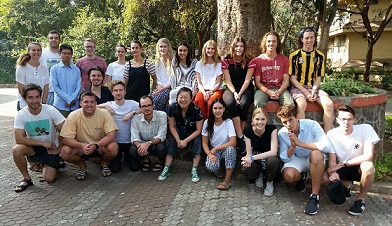
Twenty-two students majoring in political economy and geography have arrived in Mumbai for a three week intensive field school experience. The field school is run by the Departments of Political Economy and Geography in collaboration with Indian university, the Tata Institute of Social Sciences (TISS). The field school involves an intensive, integrated three-week program of classes and field visits addressing the political economy of development and environmental management in modern India. Students are engaged by Indian scholars and civil society groups working on issues of geo-political, economic and environmental importance and gain firsthand insight into the challenges facing one of the most important nations in the contemporary global economy.
The first week of the program will be run at the TISS campus in Mumbai. Students will stay on
campus at the Tata Institute of Social Sciences and participate in tailored classes and city field visits
developed by the local academic staff, in close collaboration the University of Sydney convenors.
This component of the field school will address India’s ‘national story’ of development and inspire
questions about the contested process of economic development, environmental sustainability and
social inequality.
In the second and third weeks of the program involve travel to the southern state of Kerala. We will
fly to Kozhikode, also known as Calicut, and then travel by bus to the rural district of Wyanad. Our
partners, TISS Kerala, have undertaken social audits of this district and they will join us in visits to
villages where we will learn about the contested relationships between economic development, human security and ecological sustainability in this region. We then travel back to Kozhikode to visit
local fishing communities. Researchers from TISS Kerala will brief us on work they have been doing
on the sustainability of coastal fishing communities, during field site visits. Then, we will take a train
trip from Kozhikode to the historic city of Kochi (also known as Cochin) to look at the effects of
tourism and urban development, and then head up to the famous tea plantation districts near the
town of Munnar, to examine how this industry has been affected by economic restructuring and
globalisation. The final leg of our journey then takes us to the city of Allepey to investigate the
effects of flooding, and then to Kerala’s capital, Thiruvanathapuram (also known as Trivandrum), for
seminars with policy‐makers and researchers on Kerala’s story of development and sustainability.
We will also make a field visit to the Laurie Baker Centre for Habitat Studies, where will we learn
about affordable and environmental housing. During our time in Trivandrum, we will be staying at
the Sagara Resort Hotel in Kovalam Beach, just 20km outside of the city. This hotel was designed by
architects working with the Laurie Baker Centre, and incorporates eco‐friendly design principles. Our
final destination is Kanyakumari, the southernmost tip of the peninsula, where we can dip out feet in
the water at the very extreme end of India.
The blog posts that follow will capture the student experience of contextualized learning and their reflections.

